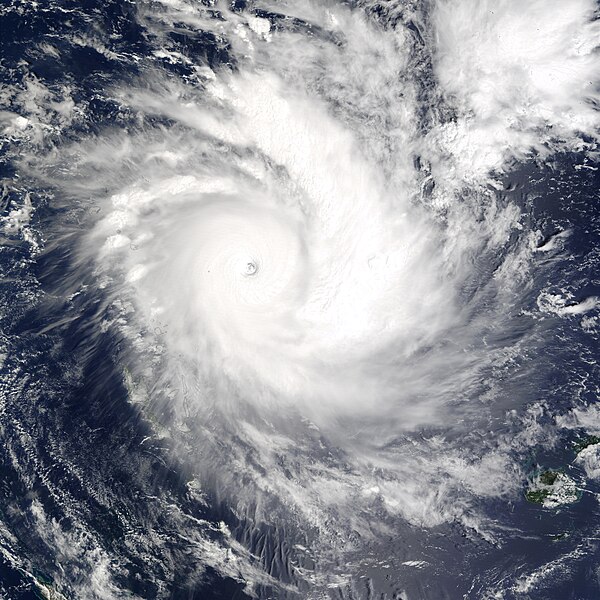2002–03 South Pacific cyclone season
The 2002–03 South Pacific cyclone season was the most active and longest tropical cyclone season since 1997–98, with ten tropical cyclones occurring within the South Pacific basin between 160°E and 120°W. The season started earlier than normal, with two systems developing before the official start of the season on November 1, 2002, while the final system dissipated on June 9, 2003, after the season had officially ended on April 30. During the season, tropical cyclones were officially monitored by the Regional Specialized Meteorological Centre (RSMC) in Nadi, Fiji and the Tropical Cyclone Warning Centres in Brisbane, Australia and Wellington, New Zealand. The United States Armed Forces through the Joint Typhoon Warning Center (JTWC), also monitored the basin and issued unofficial warnings for American interests. RSMC Nadi attaches a number and an F suffix to tropical disturbances that occur within the basin, while the JTWC designates significant tropical cyclones with a number and a P suffix. RSMC Nadi, TCWC Wellington and TCWC Brisbane all use the Australian Tropical Cyclone Intensity Scale and estimate windspeeds over a ten-minute period, while the JTWC estimates sustained winds over a one-minute period, which are subsequently compared to the Saffir–Simpson Hurricane Scale (SSHS).

2002–03 South Pacific cyclone season
2002–03 South Pacific cyclone season
2002–03 South Pacific cyclone season
2002–03 South Pacific cyclone season
1997–98 South Pacific cyclone season
The 1997–98 South Pacific cyclone season was the most active South Pacific tropical cyclone season on record, with 16 tropical cyclones occurring within the South Pacific basin between 160°E and 120°W. The season started earlier than normal with 3 systems developing before the official start of the season on November 1, 1997, while the final system of the season dissipated on May 3, 1998, after the season had officially ended on April 30. During the season 50 people died as a result of tropical cyclones, with the deadliest being Cyclone Martin with 27 known deaths. The strongest tropical cyclones during the season were Cyclone Ron and Cyclone Susan as both were estimated to have minimum pressures of 900 hectopascals (26.6 inHg), and were the most intense tropical cyclones on record in the South Pacific Ocean until Cyclone Zoe in 2002–03. After the season ended, 11 names had their names either removed or retired from the lists of names, after they caused significant impacts to South Pacific islands.

1997–98 South Pacific cyclone season
1997–98 South Pacific cyclone season






